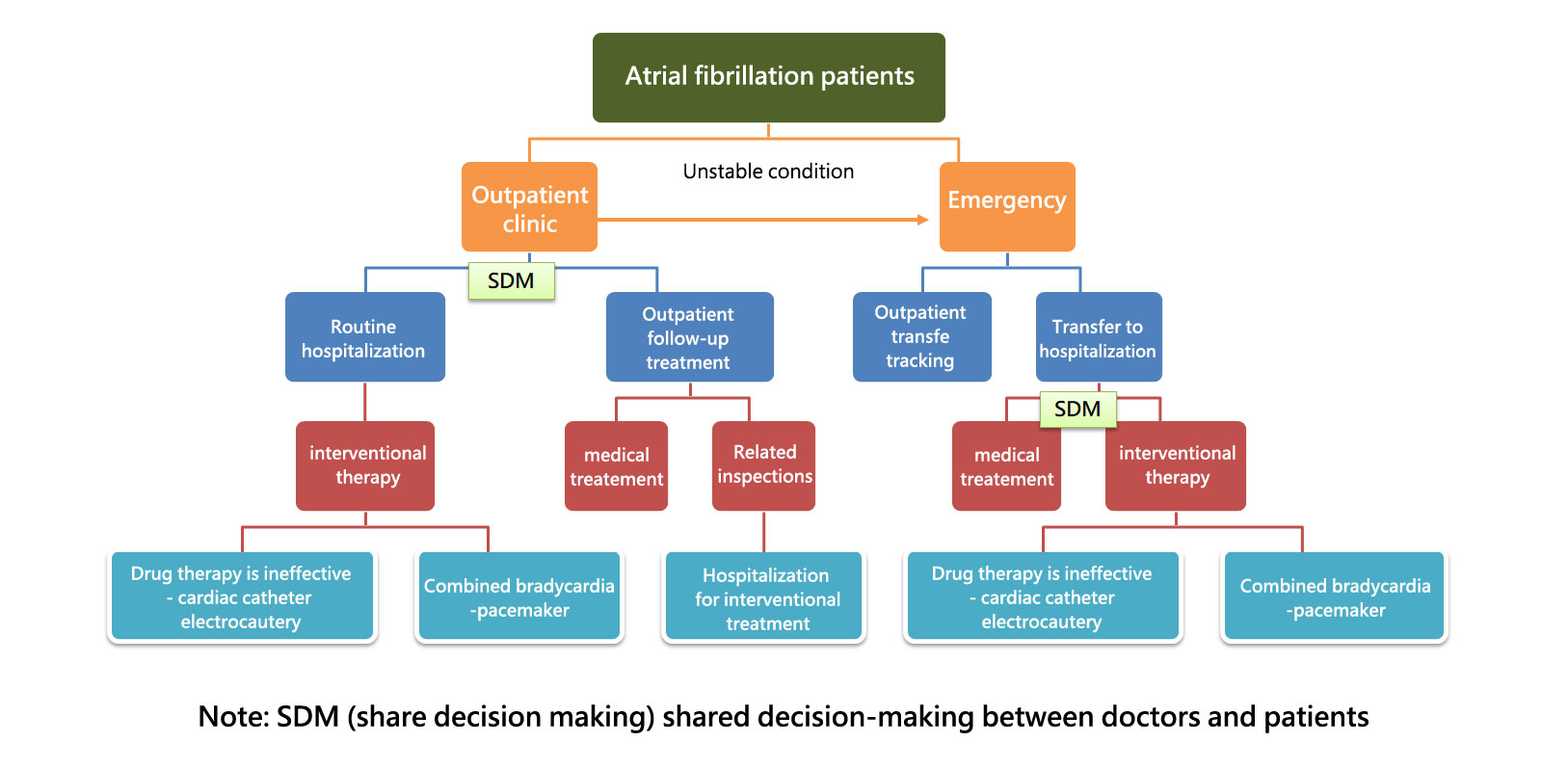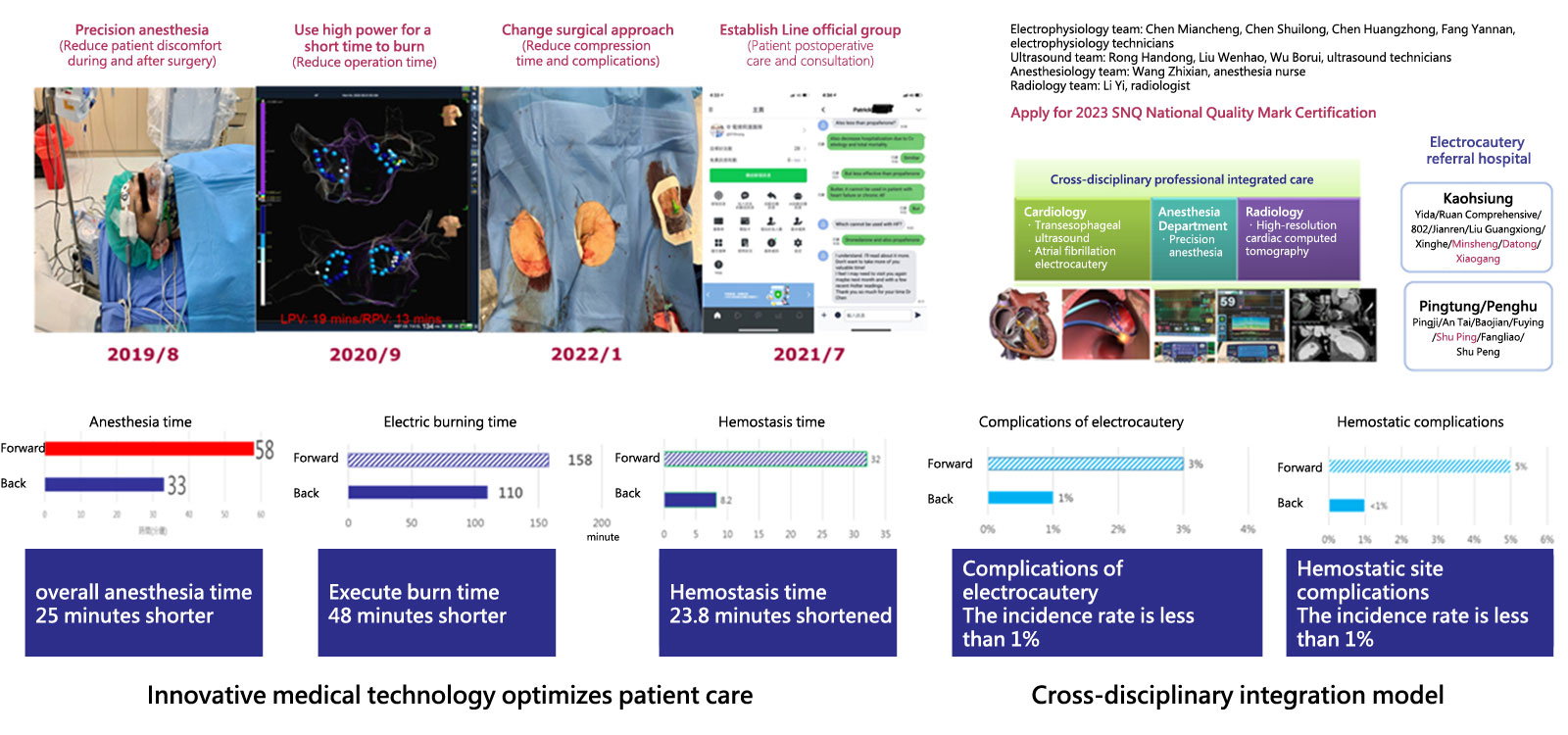Relieve Heart with Precise Catheter Ablation of Atrial Fibrillation
Current decision-making process for clinical management of patients with atrial fibrillation
Patients with atrial fibrillation are complicated by: tachycardia or bradycardia
Source and diversion of medical treatment: According to the patient’s vital signs and symptoms, if the patient is unstable, the patient will be transferred to emergency department for treatment.
Treatment decision-making: Treatment is given according to clinical treatment guidelines, and SDM is used to assist decision-making.
Treatment effect: According to the clinical treatment effect and SDM decision-making, the most appropriate treatment will be given
Invasive treatment: sign a surgical consent form and perform surgery under local or general anesthesia

The current clinical management decision-making process for atrial fibrillation is shown in this
figure.
Doctors will provide treatment in the outpatient clinic based on clinical treatment guidelines and
SDM-assisted decision-making.
Standardized precise electrocautery treatment for atrial fibrillation before/during/after surgery

Precision electrocautery treatment requires very sophisticated and complicated examinations and surgical procedures before, during, and after surgery.
Precision electrocautery treatment for atrial fibrillation



| project | operation time | surgical complications | patient satisfaction | |||
|---|---|---|---|---|---|---|
| Before integrated care | After integrated care | Before integrated care | After integrated care | Before integrated care | After integrated care | |
| 6 hours | 3 hours | 2.9% | 0.6% | 4.1/5 | 4.7/5 | |
Comparison before and after innovative integrated care
Through cross-disciplinary integration model
Operation time, complications and satisfaction have been effectively improved
And obtained the SNQ mark certification this year
The Weiben team strives for excellence and hopes to optimize the SDM execution model
News link
If you have any questions, please contact us.
886-7-7317123




